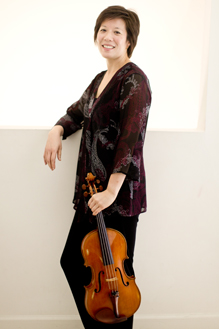Aspen String Trio gives precise performance at Flagler
Palm Beach Daily News
January 21, 2015
By Ken Keaton
Musizierenfreude!
That’s the word the Germans use to express the joy of music-making. That emotion overflowed Tuesday at the Flagler Museum when the Aspen String Trio — violinist David Perry, violist Victoria Chiang and cellist Michael Mermagen — performed Strauss, Beethoven and Mozart to a packed living room.
Not just any living room. It was Henry Flagler’s opulent estate, designed for the finest acoustics so audiences could enjoy chamber music, not in a concert hall, but in an intimate place where a smaller audience could enjoy the music-making up close. It’s what chamber music was supposed to be, and only the Flagler can truly reproduce the experience.
Professional string trios are rare, and their repertory is small. Beethoven wrote several early works, but abandoned the form after Op. 9; Haydn and Mozart only completed a single work each. Yet, the Aspen showed, the medium need not sound like a “three-legged quartet,” with one element missing.
The program began with a rarity, a trio by Richard Strauss. It was written when he was 18 but not published until 8 years ago. It’s a charming work, variations on an Austrian folk song. Even at this tender age, Strauss was inventive, though he doesn’t try to make this rustic work more important than it is.
Beethoven’s trios, published as Op. 9, are his last in the genre, but based on the Trio in G Major, Op. 9 No. 1, they are just as inventive as his Six Quartets, Op. 18.
Mozart’s one completed string trio was a divertimento, in six movements. Unlike most with that title, it has all the architecture of his greatest symphonies. Indeed, it was composed just after his last three symphonies in the summer of 1788, and it shares some of the intensity and invention of those works. It’s a remarkable work, the first truly great string trio, perhaps the greatest ever created.
Simply glorious
The performance of the Aspen Trio was a rare event. From the first note, the sound of each player was simply glorious. Surely, the superb acoustics were a factor, but even the greatest can’t create such sublime beauty where it doesn’t originally exist.
These musicians have played together for two decades, and they have achieved remarkable results. The ensemble and intonation were perfect. But most importantly, they are musicians for whom every note counts. Each note of each phrase was shaped beautifully — details like brief passages in the Mozart where players were together, before diverting, were brought out flawlessly. Perhaps only a fraction of the audience noticed these details, but the Aspen did, and they cared enough to make sure they came out. Dynamic control was amazing, as was the shape of every phrase, the architecture of every piece.
Encores are rare in chamber music concerts, but this audience would not be denied, so they performed the scherzo of Beethoven’s Trio in C minor, Op. 9, No. 3, to the same standards of the rest of this exquisite recital.
